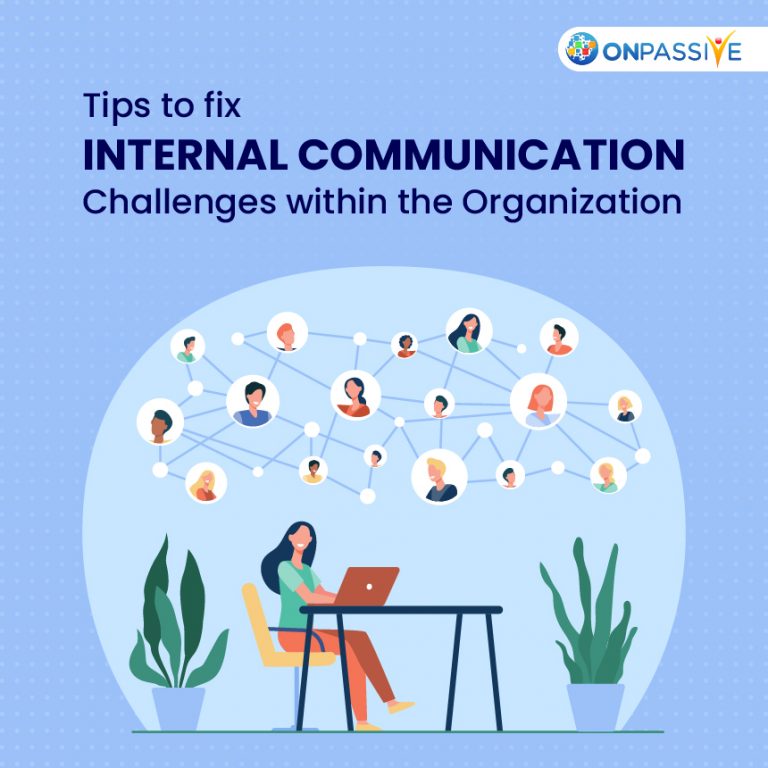
Internal communication promotes an effective flow of communication and collaboration among the individuals within the organization. It basically involves delivering messages on behalf of management and facilitating dialogues from key people who make up the organization.
Internal communication includes anything from announcing a new policy, conducting an organization-wise engagement or informing people within the organization by producing or delivering messages. It is the responsibility of HR, PR and marketing departments mainly but can be done by all the departments within the organization.
Few companies may not have enough resources for internal communication strategies. However, lack of communication can lead to a drawback of the organization, and it is also hard to recognize the signs of poor communication before the damage can be done.
Therefore, organizations need to recognize any internal communication challenges within the organization and come up with necessary solutions to overcome the challenges.
Some of the most commonly noticed problems are:
- Information overload and density
- Recognizing severity leading to legal consequences
- Poor follow up
- Alienating team members
- Lack of transparency in communication across the organization
Tips to fix Internal Communication Challenges within the Organization
The following are a few of the most identified challenges and necessary solutions or tips that can be useful to ignore and fix the internal communication challenges within the organization:
Not having a Structured Communication Pattern
When companies don’t follow a concise structure for internal communication, this can lead to missed information or failed retaining of critical data by the reader. This can further lead to information overload, and employees tend to forget more than half of the information presented when it is not retained.
When critical information is not retained, the consequences slowly include leading to hurdles to achieve organizational targets.
To overcome this challenge company’s can :
- Use infographics, explainer videos, using HR video template or data visualization tools instead of plain text can help gain the attention of employees leading to an increased engagement.
- Repeat critical information and use returning messages strategy to generate a high information retention rate.
- Use consistent structure for every newsletter and be open to two way communication by using simple surveys or quiz questions to engage readers.
Not having Employee Engagement Policies beyond the Scope
A well established Internal communication pattern can lead to successful external communication as well. It also encourages a sense of belonging within the employees. Although it is informal in nature, team building activities are a great way to focus on increasing employee engagement.
Using multiple modes of communication, including virtual communication, using performance management approach, providing incentives to employees to increase motivation or employee retention and ensure clarity in communication within the organization to promote openness in internal communication beyond the scope.
A Lack of Feedback
Feedback is important at various levels within the organization. When communication flows only in one direction, it can be ineffective. Feedback plays a crucial role in determining how well employees perform while enabling employees to understand how well they are collaborating with their managers, team and co-workers within the company.
Feedback is an essential element of internal communication, and a lack of feedback can lead to the demotivation of employees. Therefore, it is essential for management to push the organization’s positive development and provide feedback, no matter whether it is good or bad.
Email Overload
In addition to group chats on various social media platforms and phone calls, internal communication also includes sending emails as a primary source of sharing information. However, sending in many emails every day can lead to important information being lost or ignored.
In addition to this, employees tend to be frustrated with overloaded inbox and reading through hundreds of emails can be challenging for them. Therefore, organizations need to combine existing channels into one channel to streamline the work process and cut down the email overload.
Not Focusing Enough On What’s Going Wrong
One of the most common internal communication challenge and mistake most companies often make is not monitoring or measuring the impact of internal communication or messages. Without proper monitoring company’s cannot identify the internal challenges.
Therefore to identify potential challenges of internal communication, the managers need to monitor:
- If the functioning is accurate
- If all the sources are utilized to their fullest capacity
- The quality and continuity of internal communication
- If employees are delivering performance to acceptable levels
- If any factors are affecting the company’s environment in a negative manner
Monitoring and identifying potential challenges enable organizations to develop new tools and improve the standard of internal communication, thereby creating a new organizational culture.
Conclusion
Proper maintenance of internal communication is vital for an organization’s success. Therefore, organizations need to identify the drawbacks and challenges and make necessary changes in communication strategies for better results.
Getting an excellent internal communication platform enables companies to yield better results while providing them with the necessary tools to closely monitor employees’ participation and engagement levels. By evaluating these essential details a solid and effective internal communication strategies can be laid out.


